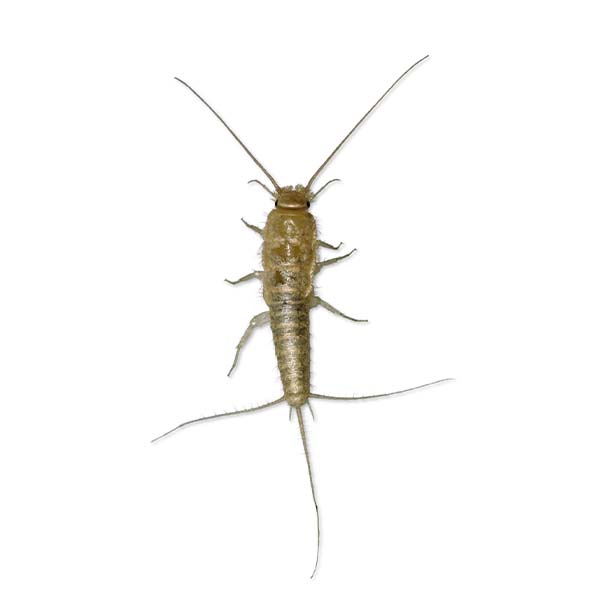Description
| Size | 1/4 to 1 in. |
| Color | Silver-Grey |
| Body Structure | Their bodies consist of a head, abdomen, six legs, two compound eyes, two long antennae, and three appendages that resemble tails. The body of the silverfish is flat and narrow and tapers down from the head in the shape of a carrot. It is covered in shiny, silver-grey scales. Two of the tail-like appendages, called cerci, point to the sides of the body, with the filament (or middle appendage) between them pointing backward. |
| Characteristics | Silverfish seek out food sources that have high sugar, starch, or protein content. They are attracted to carbohydrate-rich products like bread, flour, oats, and cereal, as well as meats and dead insects. They feed on glue and paper items — including wallpaper, photographs, and book bindings — and fabrics like cotton, rayon, silk, and linen. Silverfish also feast on dandruff, molted skins from insects, and mold, and can survive without eating for months. Telltale signs of a silverfish infestation are irregular chewing marks, molted skins, yellow marks, scales, or feces. |
| Habitat & Behavior | Silverfish do not have wings; they move by using their legs in a wiggling motion that resembles a swimming fish. Silverfish can run quickly on horizontal surfaces but are not as fast when moving vertically. However, they are able to jump up to a foot in the air.
Silverfish grow from egg to nymph to adult. The female lays up to three white, oval-shaped eggs in a crack or crevice. When the eggs hatch — which can vary from a period of three to six weeks depending on temperature — pale nymphs emerge. These nymphs continue to grow into adulthood, molting as they do and developing scales that are dark, shiny, and silver-colored. The normal lifespan of a silverfish is between two and eight years. Silverfish reproduce at all times of the year, with the female laying about 100 eggs over the course of her lifetime. |
| Prevention & Treatment | Because they are adept at hiding, silverfish can grow in numbers before being discovered, resulting in a significant infestation. These pests do not bite or directly cause harm to humans or pets, but they are destructive to your home. Silverfish can contaminate foods and eat through fabrics, paper, or other items.
Silverfish eat mold, so their presence may also indicate a mold issue in your home. They are also a preferred food of spiders, centipedes, and other insects, so silverfish in your home may attract these pests. |
